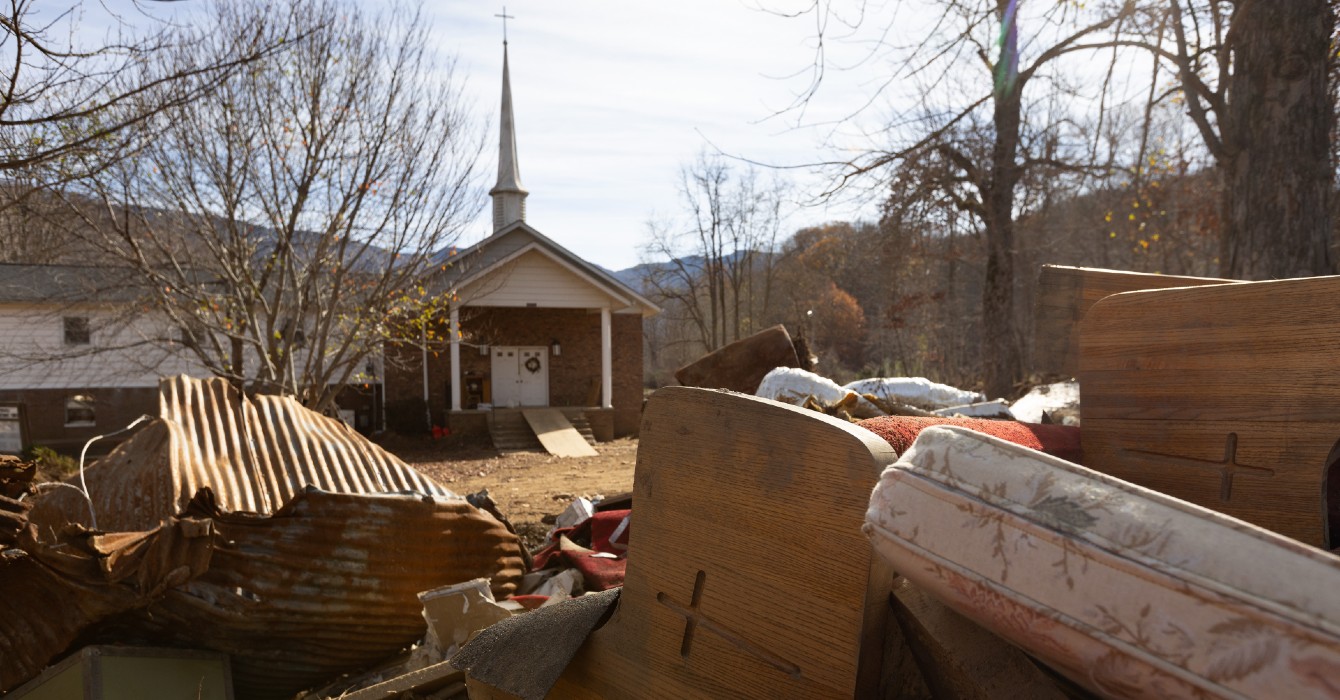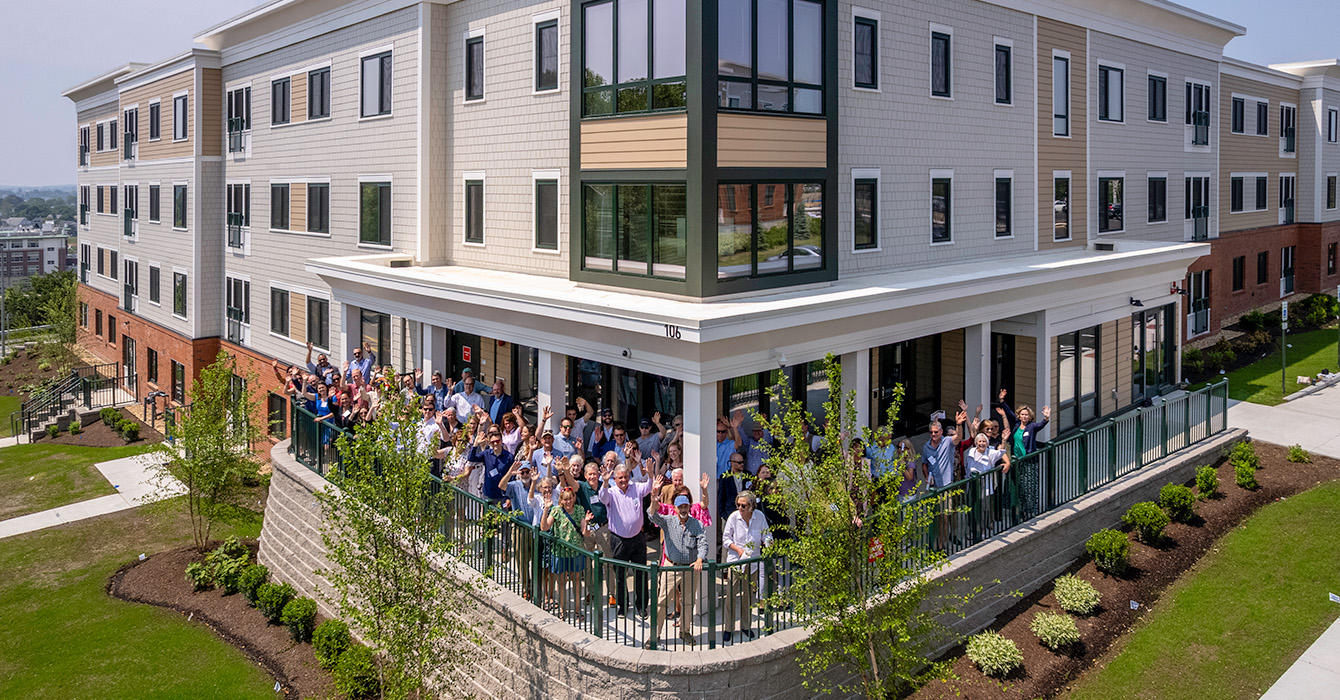Faced with declining membership, aged buildings and underutilized land, churches have been transitioning their property to new uses that help reach missional goals and reflect community needs.
As the housing crisis intensifies, houses of worship across the country are trying to better understand how they can help by building affordable housing on their property.
As a researcher, I’ve been studying how congregations build housing on their property for almost 20 years. I know that a development project is a large, time-consuming and expensive undertaking. Most faith leaders are not developers, and moving from a missional idea to a completed project can be confusing and overwhelming.
There are several phases to a faith-based property development project: discernment, predevelopment, development and construction, marketing and leasing, and operations.
Once you’ve completed the first step — discernment — it’s time for predevelopment. I want to focus on this phase, because it’s crucial and is not well understood by people without experience in planning and building.
Predevelopment is where the rubber starts to meet the road. In this phase, you will clarify your goals, process and cost, along with the scope of the work.
The predevelopment phase brings into focus the conceptual, schematic and design development of the project. It tells you how possible your project is in light of feasibility studies, financing projections and construction estimates. It’s the point when the budget is refined and you learn more about financing.
What are the steps to embarking on a faith-based property development project after discernment? What happens before the groundbreaking?
Owner’s representative
A development project is a collaborative affair between property owners, developers, architects, planners, engineers, surveyors, lawyers, financing professionals, contractors, construction crews and more.
One of the first things you’ll have to do is decide whether or not you would like to work with an owner’s representative (also known as an owner’s rep). It’s not necessary to have an owner’s rep, but it can be helpful in navigating the process.
An owner’s rep is a professional who can guide you, assist you in hiring firms to conduct studies, and make sense of the work that has been completed. This is someone who can advocate on behalf of the congregation. As your advocate and consultant, the owner’s rep has the best interests of your house of worship in mind.
There are specific firms that act as owner’s representatives and are generally paid on the back end of a development deal, taking a percentage of the total cost of the project.
Architect
The next thing you’ll want to do is think about hiring an architect. Architects play a strong role in the predevelopment process. This is where you talk about the purpose and function of the space, its features, the size of the rooms, the relationships to indoor and outdoor space, circulation through the building, and other needs. With an eye to the intended programming, an architect will produce a conceptual design.
The conceptual design will be a rendering of what the building could potentially look like, but keep in mind that the actual outcome will be affected by other factors, including zoning and design regulations, as well as financing.
Feasibility studies
Next you’ll need to conduct feasibility studies. These studies determine what can be built on the property and the state of the existing buildings, as well as neighborhood and community needs. They help guide the development and are crucial to finding the right developer.
Here are some of the studies, who does them, and what they are for:
- Real estate market study. This analysis provides a landscape of the market value of properties in the area. Real estate brokers, agents and consultants can do a real estate market study.
- Architectural engineering study. This study provides insight into the structural integrity of buildings. It includes an examination of the electrical and mechanical systems, as well as the architectural integrity of houses of worship. Such studies are conducted by building or architectural engineering firms.
- Land survey. This survey is concerned with the legal boundaries of properties and delineates property lines, maps all the buildings on the property, and confirms the elevation. There are several types of land surveys (zoning, construction, mortgage, subdivision, etc.), so it is best to ask a land surveyor which studies are needed for your project. A land surveyor typically does this work.
- Historic preservation study. The historical significance of older buildings can be a factor, especially if you are considering demolition or adaptive reuse. A historic preservation study aims to document buildings’ history, architectural significance and current condition. These can be done by nonprofit organizations or for-profit companies and consultancies that specialize in historic preservation work.
- Land use and zoning. A zoning analysis identifies what’s currently allowed on a property, including restrictions on building height and density. It also can let you know whether a zoning change is necessary. A land use planning consultant can help with these studies.
Cost estimates
At this point, you’ll clarify your project’s cost, potential eligibility for government programs and grants, and sources of financing. A typical affordable housing development can have multiple sources of capital that make up the financial stack.
It’s important to say that studies and consultants can cost thousands — even hundreds of thousands — of dollars. But keep in mind that they’re a necessary part of the process and, in some cases, might be required to get financial assistance. For example, if you’re applying for federal or state funding, real estate market studies will be required.
Some municipalities offer technical assistance and capacity-building programs to help with predevelopment work. Other organizations provide a cohort-based approach that includes technical assistance, peer support and access to professionals. These programs may come with some funding to complete studies.
St. Luke’s Episcopal Church in Seattle, Washington, for example, is constructing both affordable housing and market rate housing with space for the church. It received predevelopment funding from Trinity Wall Street’s Mission Real Estate Development program and the nonprofit Enterprise. While the congregation raised nearly $1 million, funding from Trinity’s program was essential to completing the studies.
Development takes time, patience and money. The predevelopment phase is the point in the process to construct networks with professionals and experts, ask questions, and build trust. It’s a time to gather as much information as possible, do research and make informed decisions before construction begins.
Predevelopment might seem daunting. But if your church has discerned that affordable housing is its mission, this is when you start to make that idea a reality.




















